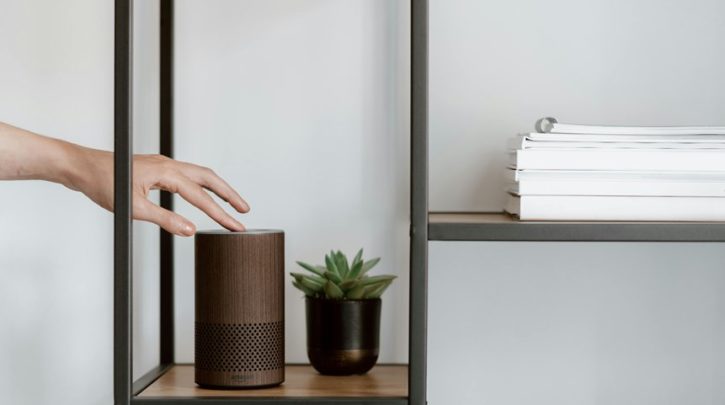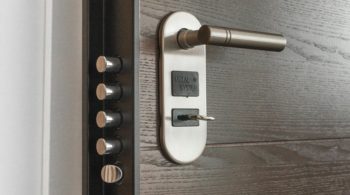If you’re deciding between the Echo Pop and Echo Dot, you’ll want to weigh factors like size, sound quality, and price carefully. The Echo Pop fits well in smaller spaces and suits casual listening, while the Echo Dot offers richer audio and better voice recognition for larger rooms. Knowing which features matter most to your daily use can help narrow down your choice—but what really sets these two devices apart beyond just sound?
Overview of Echo Pop and Echo Dot
When choosing between the Echo Pop and the Echo Dot, it helps to understand their key differences and intended uses.
The Echo Pop features a compact design with a larger 1.95-inch speaker driver, making it ideal for small spaces and casual listening at an affordable price.
On the other hand, the Echo Dot advantages include superior 360-degree audio projection and better smart home integration, suited for filling larger rooms with richer sound.
Both devices run Alexa and support the upcoming Alexa+ upgrade, but your choice depends on whether you prioritize compactness and cost or enhanced audio and versatility.
Design and Build Comparison
Although both the Echo Pop and Echo Dot share a similar shelf space footprint, their designs serve different placement needs.
The Echo Pop’s compact semicircular shape fits snugly in corners, thanks to its smooth matte plastic back and fabric mesh front, blending well with various design aesthetics. It comes in four colors, giving you more style options.
The Echo Dot’s globe shape with a soft-touch finish projects a classic look and works well in open spaces.
Significantly, the Pop uses a thin LED bar for status, while the Dot retains the traditional light ring, reflecting distinct build materials and visual cues.
Sound Quality and Audio Performance
Since sound quality plays a crucial role in choosing a smart speaker, you’ll want to understand how the Echo Pop and Echo Dot compare in audio performance.
The Echo Pop offers impressive sound clarity with its larger 1.95-inch front-firing speaker, but it lacks the audio depth and warmth found in the Echo Dot.
The Dot’s 1.73-inch driver delivers richer bass and 360-degree sound projection, making it ideal for bigger spaces.
If you value balanced sound and the option to pair for stereo, the Echo Dot stands out.
For casual listening in smaller rooms, the Echo Pop still performs well.
Voice Recognition and Smart Features
You’ll notice that the Echo Dot’s microphone setup catches your voice more accurately, even when there’s background noise, making Alexa respond faster and from farther away.
The Echo Pop works well but lacks manual controls like an action button, which might frustrate you if you prefer direct interaction.
Plus, the Echo Dot’s extra sensors give you more options to connect and control smart home devices efficiently.
Microphone Quality Comparison
When comparing the microphone quality of the Echo Pop and the Echo Dot, the Echo Dot clearly offers better voice recognition and responsiveness, especially in noisy or larger environments.
The Echo Dot’s advanced microphone array improves microphone sensitivity factors, capturing your commands more accurately even from across the room. Its refined voice pickup patterns help it distinguish your voice amidst background noise, unlike the Echo Pop, which struggles in louder settings despite having three microphones.
Additionally, the Echo Dot’s action button lets you manually activate Alexa, enhancing usability. Overall, the Echo Dot provides a more reliable microphone experience for demanding spaces.
Alexa Responsiveness Differences
Although both the Echo Pop and Echo Dot feature three far-field microphones to detect wake words, the Echo Dot offers noticeably better voice recognition and responsiveness, especially in noisy or larger spaces.
In various Alexa responsiveness scenarios, the Echo Dot’s advanced microphone array picks up commands more accurately from longer distances. It also includes an action button, letting you manually wake Alexa when needed—something the Echo Pop lacks.
These Echo Dot advantages mean you’ll experience fewer missed commands in busy environments, making it a more reliable choice if voice recognition matters most to you.
Smart Home Integration
Voice recognition plays a big role in how well your smart home devices respond, and the Echo Dot’s advanced microphone array gives it an edge over the Echo Pop in this area.
The Echo Dot’s superior voice recognition and added sensors make it a stronger choice for smart home automation, especially in larger or noisier spaces.
Both devices support Matter and act as Wi-Fi extenders, ensuring smooth device interoperability.
While the Echo Pop’s compact design is appealing, its simpler mic setup may limit responsiveness in busy environments, affecting your smart home control experience.
Pricing and Value for Money
Two popular options in Amazon’s smart speaker lineup, the Echo Pop and Echo Dot, come with closely matched price tags that make choosing between them a matter of value rather than cost alone.
You’ll find the Echo Pop priced around $39.99, while the Echo Dot often dips to similar levels during sales.
When considering budget considerations and consumer preferences, the Echo Pop suits casual users or beginners with its affordable price.
However, if you want better sound and more features for just a bit more, the Echo Dot offers stronger value for money, especially during promotions.
Portability and Placement Options
You’ll find the Echo Pop’s compact semicircular shape fits nicely in small spaces like desks or corners, while the Echo Dot’s orb design offers more 360-degree sound coverage.
Both are similar in size and weight, giving you flexibility to place them almost anywhere on a shelf or table.
Plus, the Echo Pop comes in vibrant colors like lavender bloom and midnight teal, whereas the Echo Dot includes options like deep sea blue to match your room’s style.
Size and Shape Comparison
Although both the Echo Pop and Echo Dot share a similar footprint, their shapes and sizes influence where you might place them in your space.
The Echo Pop’s compact semicircular design offers clear size advantages if you prefer a speaker that fits snugly against walls or corners, making it perfect for smaller areas like dorms.
On the other hand, the Echo Dot’s globe shape suits shape preferences that favor sound projection in all directions, ideal for larger rooms.
While both are roughly the same size, your choice depends on whether you value compactness or 360-degree sound coverage.
Placement Flexibility Insights
When deciding where to place your Echo Pop or Echo Dot, consider how their shapes and sizes affect portability and sound coverage.
The Echo Pop’s compact design and semicircular shape offer placement advantages in small spaces like corners or desks, fitting easily where space is tight.
The Echo Dot, slightly larger and orb-shaped, delivers 360-degree sound, making it better for open areas requiring broader audio reach.
Both devices boost Wi-Fi as Eero extenders, giving you versatile placement options.
Keep in mind, the Echo Pop’s lack of a manual action button may limit placement where voice commands aren’t always practical.
Color and Design Options
Color variety and design shape play key roles in deciding which Echo speaker fits your space and style best.
The Echo Pop offers four color options—charcoal, glacier white, midnight teal, and lavender bloom—giving you more choices than the Echo Dot’s black, white, and deep sea blue. Its compact semicircular design suits small spaces and corners, while the Echo Dot’s globe shape provides 360-degree audio but takes up a bit more room.
Both blend well with modern design aesthetics; however, the Echo Pop’s fabric mesh front and matte back give it a sleek, contemporary look perfect for dorms or kids’ rooms.
Connectivity and Compatibility
Since both the Echo Pop and Echo Dot support Amazon’s Alexa ecosystem, you can easily integrate either device with a wide range of smart home products.
When exploring connectivity options, both support Bluetooth for wireless streaming and Matter for broad smart home compatibility. However, compatibility differences arise as the Echo Dot includes temperature and motion sensors, offering enhanced smart home automation.
Both speakers can also extend Wi-Fi coverage up to 1,000 square feet with Amazon Eero networks.
Note that Echo Pop lacks an audio jack, limiting wired speaker connections, which might influence your choice based on your setup needs.
User Experience and Ease of Use
How easy a smart speaker is to use can make a big difference, especially if you’re new to voice assistants or have specific space needs.
User feedback shows the Echo Pop’s compact size and simple design offer high user satisfaction, making it less intimidating and perfect for small rooms.
However, the Echo Dot’s advanced microphones provide more reliable voice recognition, especially in noisy areas, and its multiple buttons give you manual control, enhancing usability.
While the Echo Pop’s directional design requires thoughtful placement, both support Alexa commands well, but your comfort with controls may sway your choice.
Ideal Use Cases for Each Speaker
While both the Echo Pop and Echo Dot serve as capable smart speakers, each shines in different settings based on your needs and space.
The Echo Pop fits ideal scenarios like dorms, kids’ rooms, or bedside tables, where compact size and budget matter most.
If you prefer richer sound and smart home versatility, the Echo Dot suits you better, especially in larger or noisier spaces.
Its stereo pairing and extra features appeal to music lovers and those wanting more control.
Understanding your user preferences helps you pick the speaker that matches your lifestyle and environment perfectly.
Alternative Alexa Devices to Consider
What options do you have beyond the Echo Pop and Echo Dot?
Consider the Echo Show 8 if you want smart displays with an 8-inch HD touchscreen and a front-facing camera for video calls and media.
The Echo Studio is perfect for audiophiles, offering superior sound quality with 3D audio and spatial awareness.
If space is tight, the Echo Flex plugs directly into an outlet, giving you Alexa access without using counter space.
Each alternative caters to different needs, so choose based on whether you prioritize visuals, audio quality, or compact convenience in your Alexa device.
Frequently Asked Questions
Can the Echo Pop and Echo Dot Connect to Multiple Smart Home Devices Simultaneously?
Yes, you can connect both Echo Pop and Echo Dot to multiple smart home devices simultaneously. Their smart home integration offers seamless device connectivity, letting you control lights, thermostats, and more with just your voice commands.
Do Either Speaker Support Bluetooth Audio Streaming From Non-Amazon Devices?
Yes, both support Bluetooth compatibility, letting you stream audio from non-Amazon devices. You’ll enjoy decent audio quality for casual listening, but if you want premium sound, consider other options tailored for high-fidelity Bluetooth streaming.
Are There Any Significant Differences in Privacy Controls Between the Two Speakers?
You won’t find significant differences in privacy features or data security between the two speakers. Both let you mute microphones, delete voice recordings, and manage privacy settings easily, so your data stays protected no matter which you choose.
Can Both Models Be Used as an Intercom System Within a Home?
Yes, both models support intercom functionality, letting you use them for speaker communication throughout your home. You can easily drop in or announce messages between devices, making staying connected simple and hands-free.
Do the Echo Pop and Echo Dot Support Multi-Language Voice Commands?
Yes, both Echo Pop and Echo Dot support language support for multilingual commands. You can switch between languages or use multiple languages seamlessly, making it easy for you to interact with Alexa in your preferred language.
Christina Pulluck helped bring Nebula Electronics from a a science and tech decision forum to a full-fledged news site by creating a new design and branding. She continues to assist in keeping the site responsive and well organized for the readers. As a contributor to Nebula Electronics, Christina mainly covers mobile news and gadgets.







